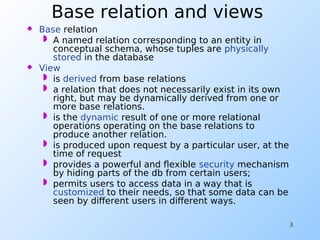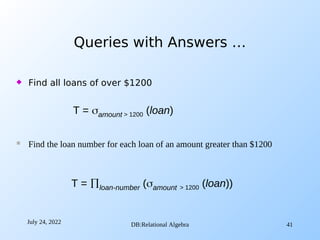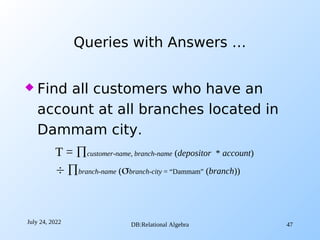This document discusses relational algebra, which is a mathematical system used to represent and manipulate data in relational databases. It defines key concepts like base relations, which are stored in the database, and views, which are derived from base relations. The core operations of relational algebra are also summarized, including selection, projection, set operations, renaming, products, and various types of joins. Examples are provided to illustrate how each operation works on relations.














![15
Commutative property does not
hold
list 2 [ list 1 (R) ]≠ list 1 [ list 2 (R)]
Prove by using examples](https://image.slidesharecdn.com/chapter5relationalalgebra-230929183420-efc9a8ed/85/Chapter-5-Relational-Algebra-pdf-15-320.jpg)































